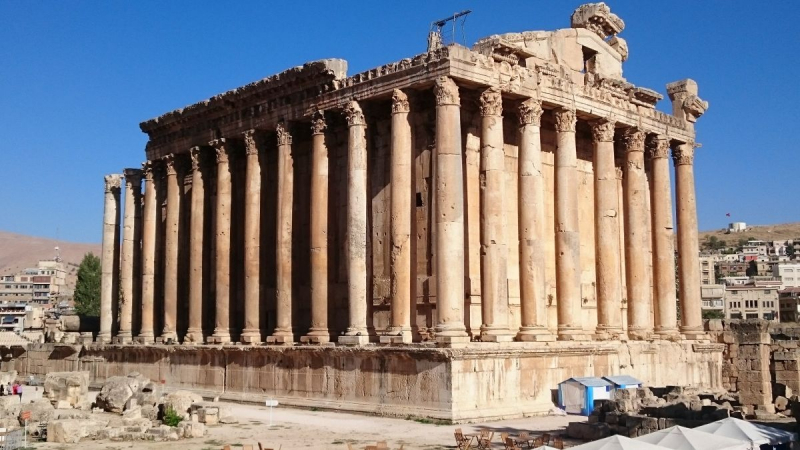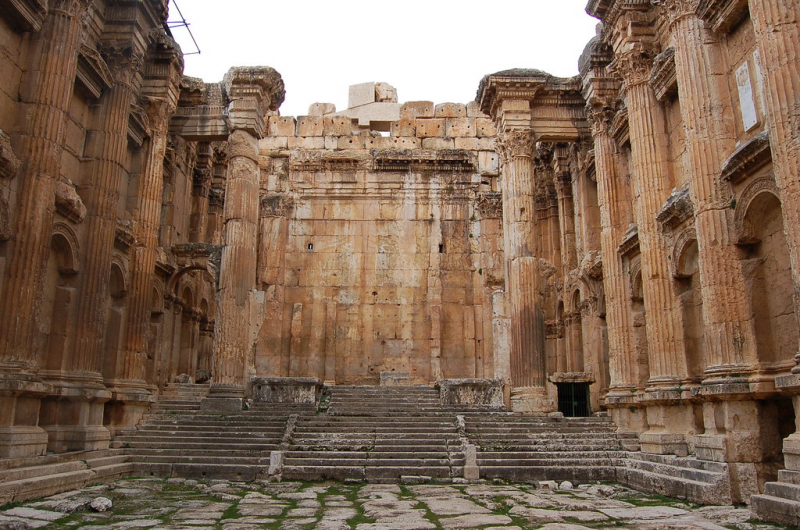Temple Of Bacchus
The next most exemplary structure of ancient Roman of architectureis Temple of Bacchus. Around 9000 BC, Lebanon's ancient Phoenician city of Baalbek was established. There were many temples in the city, including the Temple of Jupiter, Venus, Mercury, and Bacchus. One of the most impressive Roman temple ruins in the entire globe is thought to be the Temple of Bacchus. Its spectacular Roman-era architecture honors Bacchus, the deity of wine, harvest, theater, and fertility.
The Roman temple of Bacchus measuring 217 by 115 feet and standing 102 feet tall was built under Antoninus Pius's orders. 42 Corinthian columns were present, 9 of which are still standing. The entryway was still standing as late as the 16th century, although the keystone of the lintel had moved 2 feet (1 m) after the earthquakes of 1759. To support it, a crude masonry column was built in the 1860s or 1970s. The famous eagle inscription on the soffit, which was completely hidden by the supporting column for the keystone, was also damaged by the earthquakes. The design of this temple, along with the Temple of Jupiter, can be seen on several ancient Roman coins. Four sculptures in the peristyle are thought to be representations of the Acarina, making them the first recognizable examples of mites in architecture. The Lebanese government completed the rebuilding sometime around 1920. In 1920, the well-designed building was included in UNESCO's list of World Heritage Sites.












